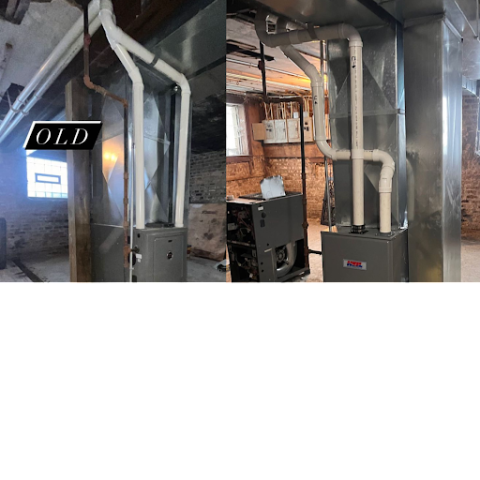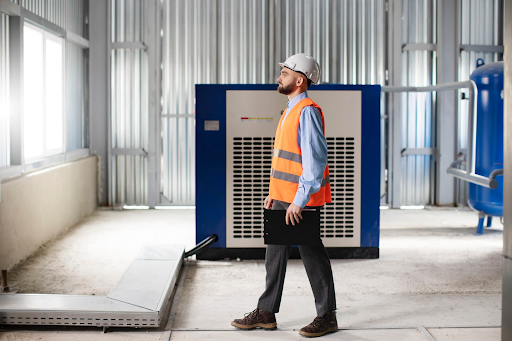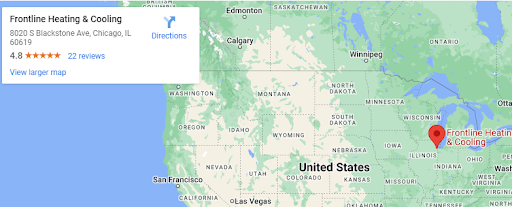Chicago winters are notorious for their bone-chilling cold, making a reliable furnace an absolute necessity. The Windy City’s frigid temperatures demand a well-maintained heating system to ensure homes remain warm and comfortable throughout the winter months. In this comprehensive guide, we embark on a journey through the nuances of furnace repair in Chicago, equipping homeowners with the knowledge and tools needed to navigate the challenges of maintaining their heating systems.
Understanding Your Furnace
Your furnace is more than just a metal box tucked away in the corner of your basement; it’s the unsung hero of your home during the bone-chilling winters of Chicago. Before you embark on any repair journey, it’s imperative to grasp the inner workings of this vital appliance.
Types of Furnaces
In the diverse landscape of Chicago homes, you’ll encounter various types of furnaces, each with its own set of characteristics and maintenance requirements. Gas furnaces are among the most common, utilizing natural gas to generate heat. These systems boast efficiency and are often favored for their cost-effectiveness. Electric furnaces, on the other hand, rely on electricity as their power source, making them a popular choice in areas where gas may not be readily available. Lastly, oil furnaces burn heating oil to produce warmth, offering an alternative for homeowners seeking versatility in fuel options.
Anatomy and Operation
To truly master furnace repair, it’s essential to familiarize yourself with the anatomy and operation of your specific furnace type. Gas furnaces consist of components such as the burner, heat exchanger, blower, and thermostat, all working in harmony to circulate warm air throughout your home. Electric furnaces feature heating elements, sequencers, relays, and fans, while oil furnaces include components like the burner assembly, fuel pump, and ignition system. Understanding how these parts function together will provide valuable insight into diagnosing and addressing potential issues.
Diagnosing Issues:
With a solid understanding of your furnace’s anatomy and operation, you’ll be better equipped to diagnose issues when they arise. Whether it’s a malfunctioning thermostat, a faulty pilot light, or a clogged air filter, knowing where to look and what to check can save you time and frustration. By familiarizing yourself with common symptoms and their potential causes, you can quickly narrow down the source of the problem and take appropriate action.
Performing Effective Repairs
Armed with knowledge about your furnace’s inner workings, you’ll have the confidence to perform necessary repairs effectively. From simple tasks like replacing air filters and cleaning components to more complex procedures such as adjusting burner settings or replacing faulty parts, understanding your furnace allows you to tackle repairs with precision and accuracy. However, it’s essential to exercise caution and adhere to safety protocols to prevent accidents and ensure the longevity of your furnace.

Common Furnace Issues in Chicago
Chicago’s harsh winter conditions can turn even the most reliable heating systems into sources of frustration and discomfort. As temperatures plummet and snow blankets the city, furnaces are put to the test, often revealing a range of common issues that can disrupt your home’s warmth and comfort. From minor annoyances to more significant malfunctions, understanding these issues is essential for ensuring your furnace operates smoothly throughout the winter months.
Pilot Light Problems
One of the most common issues homeowners encounter with their furnaces is a malfunctioning pilot light. A pilot light that won’t stay lit or keeps flickering can leave your home feeling chilly and uninviting. Several factors can contribute to pilot light problems, including a dirty or damaged pilot assembly, a faulty thermocouple, or a gas supply issue. By inspecting the pilot light assembly, cleaning it if necessary, and ensuring proper gas flow, you can often resolve this issue and restore your furnace’s functionality.
Thermostat Malfunction
The thermostat serves as the command center for your furnace, dictating when it turns on and off to maintain your desired indoor temperature. However, thermostat malfunctions are not uncommon, especially in older or improperly calibrated units. Symptoms of a faulty thermostat may include inaccurate temperature readings, unresponsive controls, or frequent cycling of the furnace. In many cases, recalibrating or replacing the thermostat can resolve these issues and restore proper heating operation.
Mysterious Noises
If your furnace emits strange noises reminiscent of clanking, banging, or squealing, it’s a clear sign that something is amiss. These noises can indicate various underlying issues, such as loose components, worn-out bearings, or airflow obstructions. Ignoring these noises can lead to further damage and potentially costly repairs down the line. By inspecting the furnace for loose or damaged parts, lubricating moving components, and clearing any debris from the system, you can often eliminate these noises and restore peace and quiet to your home.
Insufficient Heat Output
Few things are more frustrating than cranking up the thermostat only to find that your home remains chilly. Insufficient heat output from your furnace can stem from a variety of causes, including clogged air filters, blocked vents or ducts, or a malfunctioning blower motor. By regularly changing air filters, ensuring proper airflow throughout your home, and scheduling professional maintenance as needed, you can optimize your furnace’s performance and ensure consistent heat distribution.

Intermittent Cycling
A furnace that cycles on and off frequently, known as short cycling, can indicate an underlying issue that requires attention. Short cycling can strain your furnace, reduce its efficiency, and ultimately lead to premature wear and tear. Common causes of short cycling include dirty air filters, thermostat issues, or a malfunctioning flame sensor. By addressing these issues promptly and implementing preventive maintenance measures, you can prolong your furnace’s lifespan and minimize the risk of unexpected breakdowns.
DIY Furnace Repair Tips
While some furnace problems necessitate professional intervention, many issues can be resolved through simple DIY repairs. Armed with basic troubleshooting knowledge and a willingness to roll up your sleeves, you can tackle common problems such as clogged air filters, faulty thermostats, and ignition issues. We’ll provide a comprehensive guide to DIY furnace repair, empowering homeowners to take control of their heating systems.
Knowing When to Call a Professional
While DIY repairs can be effective, certain furnace issues require the expertise of a trained professional. We’ll highlight warning signs that indicate it’s time to enlist the help of a furnace repair technician, such as gas leaks, electrical malfunctions, and complex mechanical problems. By recognizing these red flags early on, homeowners can prevent further damage and ensure the safety of their households.
Finding the Right Furnace Repair Service in Chicago
With a myriad of furnace repair companies vying for your business, selecting the right service provider can be a daunting task. We’ll navigate the maze of options, offering guidance on essential factors to consider when choosing a furnace repair service. From evaluating experience and certifications to scrutinizing customer reviews and assessing pricing transparency, we’ll equip homeowners with the tools they need to make informed decisions.
Preventive Maintenance Practices
The adage “an ounce of prevention is worth a pound of cure” rings especially true when it comes to furnace maintenance. We’ll outline a proactive approach to furnace care, emphasizing the importance of regular maintenance tasks such as annual inspections, filter replacements, and duct cleaning. By incorporating these preventive measures into your routine, you can extend the lifespan of your furnace and minimize the likelihood of costly repairs down the road.
Upgrading Your Furnace
For homeowners grappling with an aging or inefficient furnace, upgrading to a newer model may offer a solution. We’ll explore the benefits of upgrading, from improved energy efficiency and enhanced comfort to potential cost savings over time. Whether you’re considering a switch to a high-efficiency gas furnace or exploring the advantages of a smart thermostat, we’ll guide you through the decision-making process.
Winterizing Your Home
In addition to maintaining your furnace, preparing your home for winter can help optimize heating efficiency and reduce energy costs. We’ll share expert tips for winterizing your home, from sealing drafts and insulating windows to utilizing programmable thermostats and optimizing airflow. By implementing these strategies, you can create a cozy sanctuary that wards off the chill of even the coldest Chicago winters.
Conclusion
At Frontline Heating & Cooling, we believe in proactive maintenance to prevent problems before they arise. Our preventive maintenance programs are designed to keep your furnace running smoothly, maximizing efficiency and longevity while minimizing the risk of unexpected breakdowns. With regular inspections, tune-ups, and filter replacements, we’ll help you stay one step ahead of potential issues, ensuring your furnace operates reliably when you need it most.
When it comes to furnace repair in Chicago, trust the experts at Frontline Heating & Cooling to deliver unparalleled service and peace of mind. Our commitment to quality, integrity, and customer satisfaction sets us apart as the premier choice for all your heating needs. Contact us today to schedule a service appointment and experience the Frontline Heating & Cooling difference for yourself. Stay warm, Chicago!

Media Contact
Company Name: Frontline Heating & Cooling
Contact Person: Media Relations
Email: Send Email
Phone: +18722341019
Address:8020 S Blackstone Ave
City: Chicago
State: Illinois
Country: United States
Website: https://frontlineheatingcooling.com/
